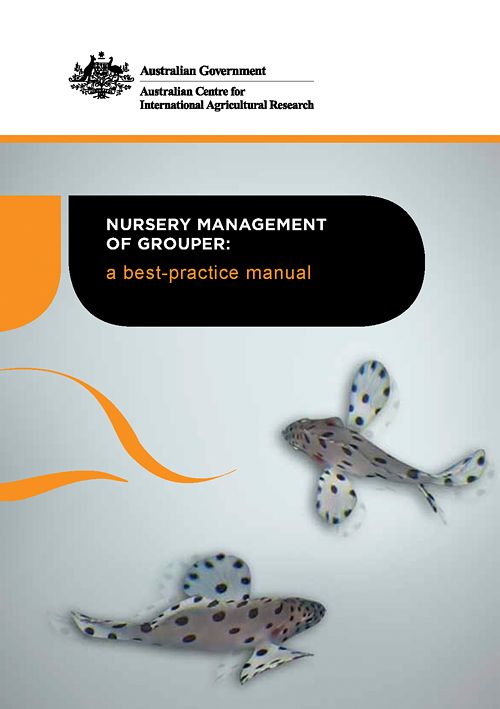Nursery management of grouper: A best-practice manual
24 April 2013 | Suko Ismi, Tatam Sutarmat, N.A. Giri, Michael A. Rimmer, Richard M.J. Knuckey, Anjanette C. Berding and Ketut Sugama | 5987 Downloads | .pdf | 1.58 MB | Australia, Better management practices, Indonesia, Marine finfish, Philippines, Environment and Sustainability, Education and Training, Vietnam
With continued expansion of grouper aquaculture throughout the Asia– Pacific region, there is growing demand for fingerlings to stock grow-out farms. In Indonesia, this demand has led to the development of a dedicated grouper nursing industry in several provinces including Aceh and East Java. The nursery phase is an intermediate step between hatchery production of seed and stocking of grow-out farms. It involves growing delicate juvenile fish of 2–3 cm long through to physically robust animals of 5–10 cm long.
The Australian Centre for International Agricultural Research (ACIAR) has funded research by Indonesian and Australian agencies that has shown how grouper nursing can provide a profitable alternative to shrimp farming. As marine finfish aquaculture continues to develop throughout the Asia– Pacific region, there is associated potential for specialised nursery culture in other countries.
This manual provides practical guidelines for those engaged in the nursery culture of groupers in Indonesia as well as elsewhere in the tropics. It provides information on husbandry of groupers in the nursery phase, to reduce losses due to disease and cannibalism, and thus to increase the profitability of grouper nursing. The guidelines are derived from outcomes of ACIAR-funded research as well as other published information on grouper nursery management.
Copyright, all rights reserved.

